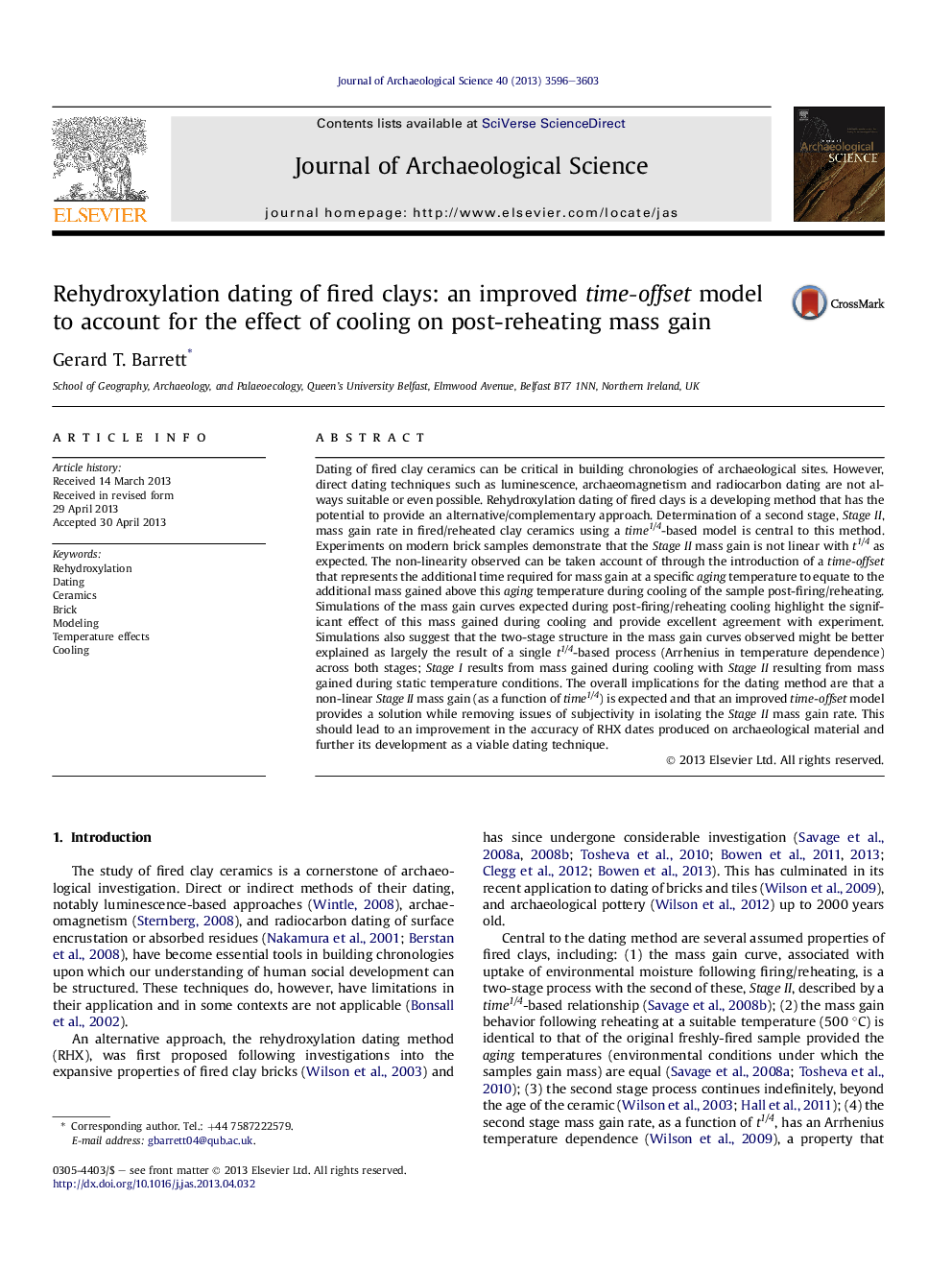| کد مقاله | کد نشریه | سال انتشار | مقاله انگلیسی | نسخه تمام متن |
|---|---|---|---|---|
| 10498900 | 943846 | 2013 | 8 صفحه PDF | دانلود رایگان |
عنوان انگلیسی مقاله ISI
Rehydroxylation dating of fired clays: an improved time-offset model to account for the effect of cooling on post-reheating mass gain
ترجمه فارسی عنوان
ارزیابی دوباره هیدروکسیل شدن از کپسول های آتش نشانی: یک مدل زمانبندی افقی بهبود یافته برای تأثیر خنک کننده در افزایش توده پس از گرم شدن
دانلود مقاله + سفارش ترجمه
دانلود مقاله ISI انگلیسی
رایگان برای ایرانیان
کلمات کلیدی
موضوعات مرتبط
مهندسی و علوم پایه
مهندسی مواد
دانش مواد (عمومی)
چکیده انگلیسی
Dating of fired clay ceramics can be critical in building chronologies of archaeological sites. However, direct dating techniques such as luminescence, archaeomagnetism and radiocarbon dating are not always suitable or even possible. Rehydroxylation dating of fired clays is a developing method that has the potential to provide an alternative/complementary approach. Determination of a second stage, Stage II, mass gain rate in fired/reheated clay ceramics using a time1/4-based model is central to this method. Experiments on modern brick samples demonstrate that the Stage II mass gain is not linear with t1/4 as expected. The non-linearity observed can be taken account of through the introduction of a time-offset that represents the additional time required for mass gain at a specific aging temperature to equate to the additional mass gained above this aging temperature during cooling of the sample post-firing/reheating. Simulations of the mass gain curves expected during post-firing/reheating cooling highlight the significant effect of this mass gained during cooling and provide excellent agreement with experiment. Simulations also suggest that the two-stage structure in the mass gain curves observed might be better explained as largely the result of a single t1/4-based process (Arrhenius in temperature dependence) across both stages; Stage I results from mass gained during cooling with Stage II resulting from mass gained during static temperature conditions. The overall implications for the dating method are that a non-linear Stage II mass gain (as a function of time1/4) is expected and that an improved time-offset model provides a solution while removing issues of subjectivity in isolating the Stage II mass gain rate. This should lead to an improvement in the accuracy of RHX dates produced on archaeological material and further its development as a viable dating technique.
ناشر
Database: Elsevier - ScienceDirect (ساینس دایرکت)
Journal: Journal of Archaeological Science - Volume 40, Issue 10, October 2013, Pages 3596-3603
Journal: Journal of Archaeological Science - Volume 40, Issue 10, October 2013, Pages 3596-3603
نویسندگان
Gerard T. Barrett,
